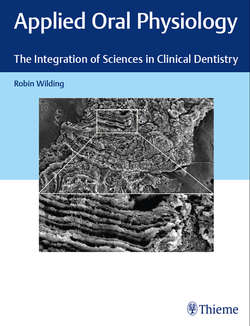Читать книгу Applied Oral Physiology - Robin Wilding - Страница 50
На сайте Литреса книга снята с продажи.
3.5.5 Functions of the Periodontal Ligament
ОглавлениеThe periodontal ligament provides the following functions:
• Attachment of the tooth to the socket allowing for resilience to impact and slight displacement during function.
• A mechanism for repositioning of the tooth in the socket during eruption and later in response to occlusal and approximal wear.
• An effective site for mechanoreceptors which provide sensory information about the direction and magnitude of forces applied to the tooth during function.
• To prevent ankylosis (bony fusion) of the root to the socket and prevent root resorption.
Teeth, which have been accidentally knocked out (avulsed), may be reimplanted, but the inevitable death of periodontal ligament cells, due to the disruption of their blood supply, has long-term consequences. In the absence of vital cells and also in a bacterially contaminated environment, the ligament repairs with a fibrous scar. Eventually, the scar tissue calcifies and the root becomes fused or ankylosed to the alveolar bone. Recall that bone is constantly being resorbed and reformed. The root may then be included in the resorption process, but of course it is replaced with new bone, not root dentin. The capacity of the ligament to prevent bony ankylosis to the root may be a function of the ECRs of Malassez, or there may be some characteristic of periodontal ligament fibroblasts, which secrete a type of collagen which inhibits calcification.
Key Notes
The vascular supply to the ligament is via the gingiva, alveolar bone, and apical vessels. The periodontal arteries enter through a series of Volkmann’s canals from the lamina dura of the alveolar bone and join those entering at the apex of the socket with the pulpal vessels (▶ Fig. 3.9). The vessels from each source branch and anastomose with each other to form a plexus around the tooth and form a cuff around the neck of the tooth, which consists of a strange glomeruli-like structure. Human incisor teeth undergo small pulsations toward the labial side, which coincide with the arterial pulse.
